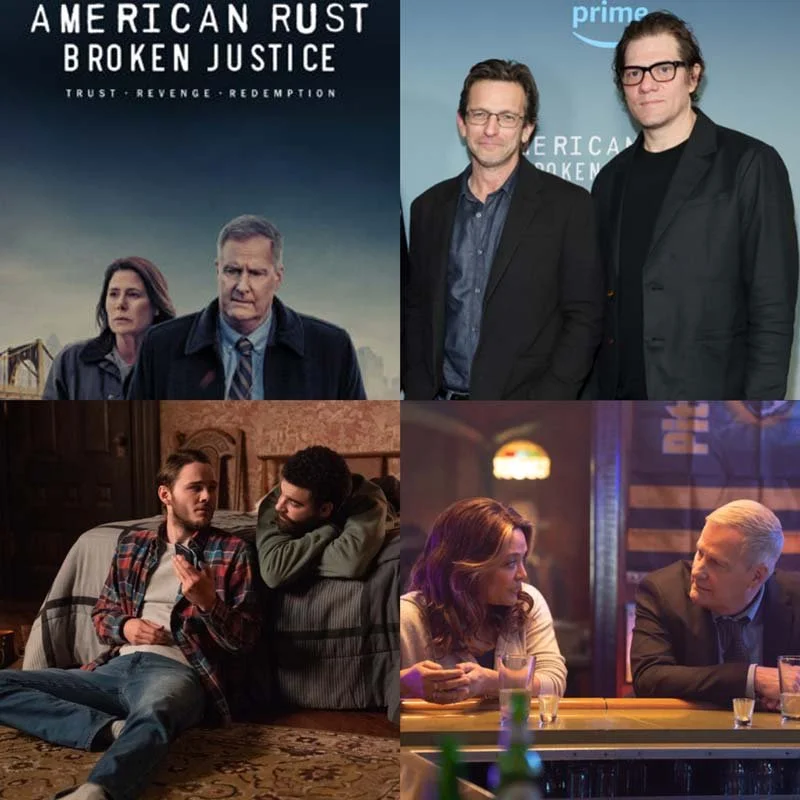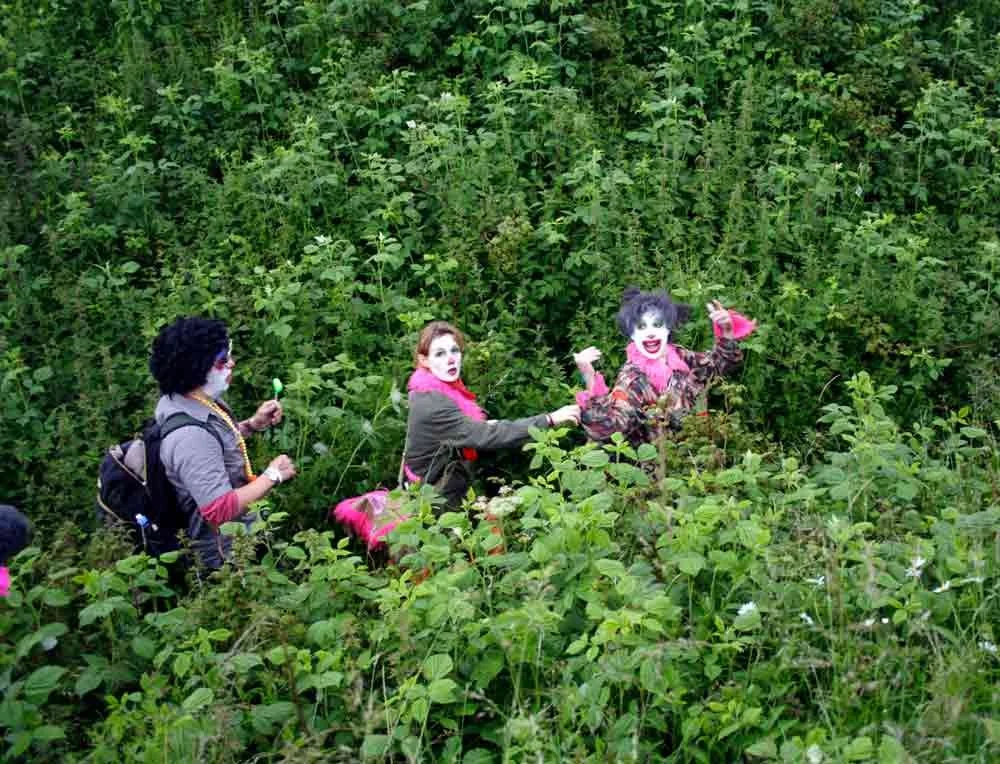Eric Fischl is an internationally acclaimed American painter and sculptor. His artwork is represented in many distinguished museums throughout the world and has been featured in over one thousand publications. His extraordinary achievements throughout his career have made him one of the most influential figurative painters of the late 20th and early 21st centuries.Fischl’s paintings, sculptures, drawings and prints have been the subject of numerous solo and major group exhibitions and his work is represented in many museums, as well as prestigious private and corporate collections, including The Metropolitan Museum of Art, The Whitney Museum of American Art, The Museum of Modem Art in New York City, The Museum ofEric Fischl is also the founder, President and lead curator for America: Now and Here. This multi-disciplinary exhibition of 150 of some of Americaís most celebrated visual artists, musicians, poets, playwrights, and filmmakers is designed to spark a national conversation about American identity through the arts. The project launched on May 5th, 2011 in Kansas City before traveling to Detroit and Chicago. Eric Fischl is a Fellow at both the American Academy of Arts and Letters and the American Academy of Arts and Science. He lives and works in Sag Harbor, NY with his wife, the painter April Gornik.
Fischl is President of the Guild Hall Academy, East Hampton. Mia Funk is honored to have been chosen to be the inaugural artist participating in the Fischl Gornik residency and to be conducting interviews, artworks and community art initiatives with Guild Hall Academy, Sag Harbor Cinema Arts Center, and other initiatives founded by April Gornik and Eric Fischl.
ERIC FISCHL
The unfortunate thing about the modern world that we live in, in terms of art, is that it's all about us. I wish we, in a way, lived in a time when it wasn't about us, that understanding the world didn't go through the individual's eyes, through the individual's heart that we were all connected to something that was outside of ourselves that we applied ourselves to. You know what I mean? It's like now one artist is saying, "Understand the world through what I'm experiencing or what I feel." Somebody else is saying, you know, "Fuck that. Look at this. This is how I feel." How do you keep yourself alive in terms of feeling?
THE CREATIVE PROCESS
You teach students sometimes. You have a lecture series. Does that give you something? Being in contact with students, with young people who are inspired, the upcoming generation?
FISCHL
I definitely like looking at young artists' work. Keeping in touch, not that I fully understand what the hell it is they're doing (he laughs), but I keep in touch with it. And, to me, the greatest pleasure in connecting with a young painter, a student is you look at their work and you can show them in a very simple way that you see everything that they're doing. That you see when they're inspired, when they're afraid, when they're lazy, when they're confused. That without knowing them at all, you can look at the thing they're presenting you and you can say, well, see here, you couldn't figure this out at all. And over here, this gave you the greatest pleasure you've ever had in your life. And watch these kids go–How can you see that? And then, gradually realizing that in fact, it's a language. You're communicating, and everything you put into a painting can be brought out of a painting by somebody who's literate in painting. And to me, that's a great pleasure because it shows them that they will be seen. They will be understood. They will be felt and that they have to take that very seriously.
THE CREATIVE PROCESS
Yes, each stroke has a feeding embedded in it. Yes, I know I get inspiration from very young people. We have an inner-city school project, and I like working with the Ph.D. and MFA students, but I really get a kick out of getting the work of the young students. They're just starting off and first sending us, I think quite strong poems, I'm going off-subject. The emotion is so raw. They're just becoming a writer. And I don't know if they'll go on to write books, but sometimes wonderful things come out and they just need to be seen. They just need someone to believe in them and understand what they're doing. And I think for me, that's the point of art, is to inspire other people. And also, I should say, give voice to what can't be said in everyday discourse.
FISCHL
And also make them feel like they belong. They belong to a larger world. They fit into it. I also have some projects that I do with a community college in Phoenix where the whole thing is to get them to feel like no matter where their backgrounds are from, the difficulty they have in their personal lives, the isolation that they feel in relationship to that, that within the art community, they're embraced. They're welcome there, all they have to do is just keep getting better at it. But the community is there. And I think that's something we're all looking for is where we belong.
FISCHL
I think with sculpture there is another aspect to it as well, which is that it's much more of a direct relationship to your hand than the painting. A painting is you're extending your reach with a brush. And touching with that from that distance. With sculpture, you're actually hand-to-hand combat with the object. And it's more sensuous and it's more fraught. It's more physical. And so I find it interesting also, there are memories that your hand has your body, your mind can't unlock by seeing. It has to unlock by actually feeling. Well, I found that in order to create an immediate narrative volition. That to create an immediate connection to an unfolding, you need to have in balance. You need to have something that is in motion. And motion is an imbalance trying to correct itself, right? I've never said that before, but I think that's actually a really good definition of motion in my work. That actually is the metaphor for my work. Imbalance trying to correct itself.
(on tendencies in contemporary art)
It's not connecting seeing to feeling. That's the big problem. It's connecting seeing to seeing. Already seen to seeing. And usually, the artist is the one that is gifted to see first, right? That everyone witnesses, but the artist sees at the same time they witness. And it's the seeing that is the order of understanding. And so, what you're getting now is you're getting a lot of artists that are receiving already seen things. They have already been organized. And then they're taking it and sort of reorganizing it. You know, that's good maybe as a formal exercise, but not as something that it's really transformative.
❧
The tragedy of my life surrounding all of that time with my mother and her problems and her suicide was I couldn't deal with, for many years. So when I went off to be an artist, I went off to not look into the complexity of feelings and psychological damage that had occurred. It was only later when I started to work with figuration and work with the matrix of family structure and the interrelationship between that the dynamism of my experience showed up in a positive way. Up until then, it had been in a suppressed way. It had been dark, murky feelings, stubbornness, stodgy, unemotional... had been sort of the core of the kind of way that I was painting. And then, eventually, when dealing with it, it became a sharing way. My first years of art training were in Arizona. And in Arizona, I was beginning to learn how to see. And one of the things about desert light is that it's high contrast. It's sharp-edged, and it's flat. And so that's become very much a part of the work, certainly had over a long period of time.
And I spent time early in the 80s in St. Tropez and southern France. And the revelation of their sort of hedonism on the beaches had a profound. One being that the nudity or the partial nudity there was obviously not taboo. And so it went against my sort of American Puritanism and also the body language of the people was social.
So it wasn't art school nude posing. It was people interacting with each other but without clothes on. And so that became a basis for my dramas, being able to use because I took a lot of photographs of them and I would put them into paintings. Wherever I put them, they would be now naked, not simply nude, but they'd be naked and interacting and it would be believable.
Excerpt of a 7,000 word interview which will be published across our network of participating journals. This interview was conducted by Mia Funk with the participation of collaborating universities and students. Associate Interviews Producer on this podcast was Leni Sperry-Fromm. Digital Media Coordinator is Yu Young Lee. “Winter Time” was composed by Nikolas Anadolis and performed by the Athenian Trio.
Mia Funk is an artist, interviewer and founder of The Creative Process.



















































